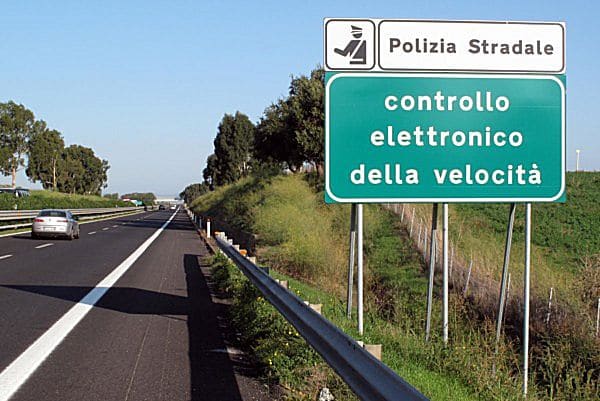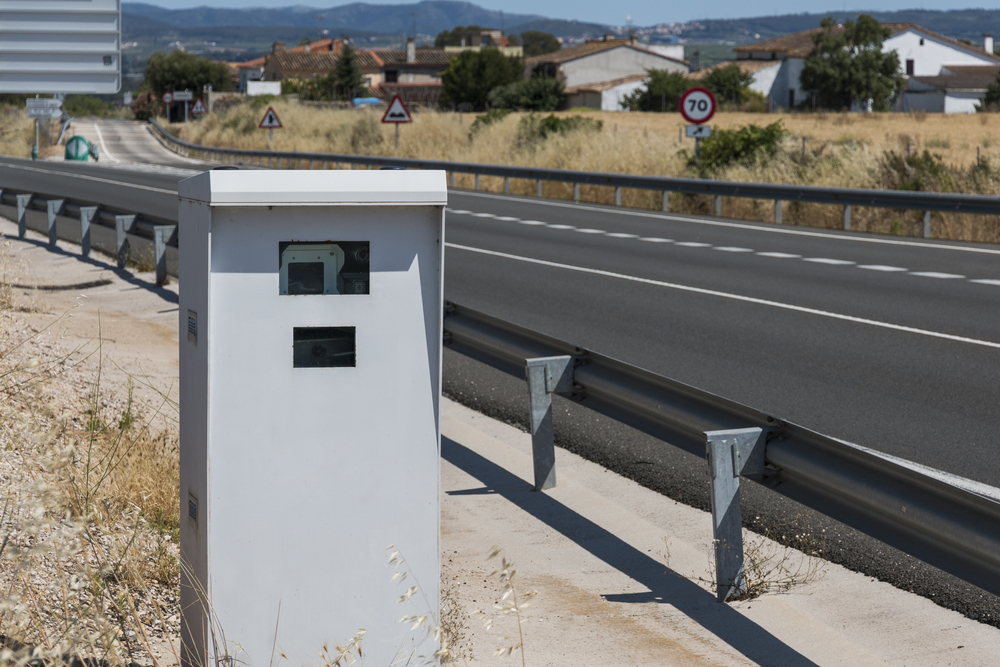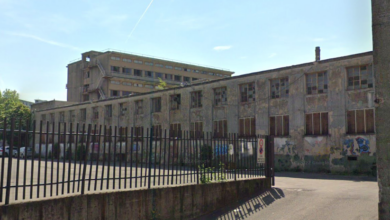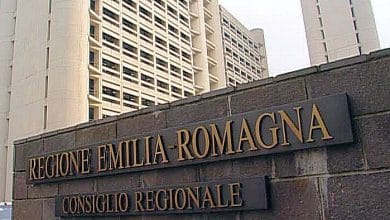
The Viminale's recommendations to local and traffic police to prevent municipalities from using speed cameras to raise cash. Decree, Ministry of Infrastructure and Transport 13/06/2017 , GU 31/07/2017 Published on
– Fri, 11/08/2017 – il Giornale.it
Enough "wild speed camera“: the Viminale calls to order the Municipalities who use it to raise cash rather than as a deterrent to the speed of cars in inhabited centres.
“Traffic police bodies using speed control devices and systems must ensure that the control point is effectively reported and made visible, as well as placed at an adequate distance, both from the sign indicating the inspection activity and from the sign showing the maximum speed limit“, reads a circular from the Ministry of the Interior issued in recent days and which also imposes annual checks on the machines.
“Law enforcement officers who disregard the provisions will commit the crime of abuse of office and i minutes may be cancelled by presenting an appeal to the prefect or to the justice of the peace", toadds toHandle Rocco Palese, Vice-President of the House Budget Committee.
MINISTRY OF INFRASTRUCTURE AND TRANSPORT
DECREE 13 June 2017
Initial and periodic checks of functionality and calibration of the equipment used in the verification of violations of the maximum speed limits, reporting methods of the control stations on the road network. (17A05179)
THE MINISTER OF INFRASTRUCTURE AND TRANSPORT
Given the art. 45 of the legislative decree 30 April 1992, n. 285, «New Highway Code», and subsequent amendments, which provides, among other things, for the approval or homologation by the Ministry of Infrastructure and Transport of the devices, equipment and technical means suitable for ascertaining and automatic detection of violations of traffic regulations;
Given the art. 192 of the decree of the President of the Republic 16 December 1992, n. 495, "execution regulation and implementation of the new highway code", and subsequent amendments, which governs the procedure for obtaining approval or approval also of devices, equipment and technical means for the verification and automatic detection of violations;
Given the art. 142 of the legislative decree n. 285 of 1992, and subsequent modifications, which governs the speed limits;
Given the art. 345 of the decree of the President of the Republic n. 495 of 1992, and subsequent modifications, which establishes the general requirements of the equipment and means of ascertaining the observance of the speed limits;
Having regard to the decree of the Minister of Public Works of 29 October 1997 containing «Approval of prototypes of equipment for ascertaining compliance with speed limits and their methods of use»;
Given the art. 201 of the legislative decree n. 285 of 1992, which regulates the notification of violations, as amended by the decree-law of 27 June 2003, n. 151, converted with amendments into law 1 August 2003, n. 214, and by art. 36 of the law of 29 July 2010, n. 120;
Having seen in particular paragraph 1-bis of the aforementioned art. 201, which lists under letters a) to g-bis) the cases in which the immediate notification of the violation is not necessary; and paragraphs 1-ter and 1-quater, which provide that for the cases under letters b), f), g) and g-bis) the presence of the traffic police bodies is not required if the verification takes place through survey with appropriate devices or equipment duly approved or approved, and among these the violations of art. 142 of the legislative decree n. 285 of 1992, and subsequent amendments;
Given the art. 4 of the decree-law 20 June 2002, n. 121, converted, with amendments, into law 1 August 2002, n. 168, which identifies the types of roads along which it is possible to carry out remote and automatic detection, among other things, of violations of the rules of conduct pursuant to art. 142 of the legislative decree n. 285 of 1992, and subsequent amendments;
Given the art. 3 of the decree-law of 3 August 2007, n. 117, converted, with amendments, into law 2 October 2007, n. 160, containing urgent amending provisions of the highway code to increase the levels of safety in traffic;
Given the decree of the Minister of Transport, in agreement with the Minister of the Interior, 15 August 2007, containing «Implementation of art. 3, paragraph 1, letter b) of the decree-law of 3 August 2007, n. 117, containing urgent amending provisions of the highway code to increase the levels of safety in circulation";
Given the art. 25 of the law of 29 July 2010, n. 120, containing provisions on road safety;
Given the sentence of the Constitutional Court n. 113, filed on 18 June 2015, which declared unconstitutional, with reference to art. 3 of the Constitution, art. 45, paragraph 6, of the legislative decree n. 285 of 1992, in the part in which it does not provide that all the equipment used to ascertain violations of the speed limits are subjected to periodic checks of functionality and calibration;
Given the art. 117, paragraph 2, letter r), of the Constitution, which gives the State the exclusive competence in matters of weights and measures;
Given the art. 4 of the legislative decree 31 March 1998, n. 112, with which the power of direction and coordination in relation to the functions and tasks conferred is kept to the State;
Given the law of 11 August 1991, n. 273, containing «Establishment of the national calibration system, which defines the primary metrological institutes, national standards and calibration centres»;
Having regard to the decree of the Minister of Economic Development, in agreement with the Ministers of the Interior, of agricultural and forestry policies, of the environment and of the protection of the territory and the sea, of infrastructures and transport, of labor and social policies, of health, education, university and research, defense, 22 December 2009, with which ACCREDIA was designated as the only national body authorized to carry out accreditation activities, in application of art. 4 of the law of 23 July 2009, n. 99;
Having seen the documents of address n. 1/01106 and no. 1/01116, approved by the Chamber of Deputies in the session of 28 January 2016 and accepted by the Government;
Considering that pending the amendment of the art. 45, paragraph 6, of the legislative decree n. 285 of 1992, however, it is appropriate to implement the provisions of sentence no. 113/2015 of the Constitutional Court;
Considering that during the approval of the prototype of the equipment for ascertaining violations of the maximum speed limits, the competent offices of the ministry, even in the absence of specific reference standards, nevertheless imposed, in the decrees approving the prototypes, the need ' periodic checks, explicitly or with reference to compliance with the instructions contained in the use and maintenance manuals;
Considering, in particular, that since 2003, periodic checks have been required at least annually, while for a limited number of devices, intended to operate exclusively under the direct supervision of the traffic police bodies, the functionality checks and checks to be carried out every time the device is put into operation were considered sufficient, including any self-diagnosis procedures which exclude operation in in the event of installation or pointing errors, and the maintenance and verification operations prescribed in the use and maintenance manuals;
Given the need to standardize the behavior of the manufacturers of the devices and equipment in question, and of the traffic police bodies involved in their use;
Having heard the notice of the Ministry of the Interior that, pursuant to art. 11, paragraph 3, of the legislative decree n. 285 of 1992, has the task of coordinating the traffic police services carried out by anyone, expressed in note no. 300/A/1692/17/144/5/20/3, dated 2 March 2017, of the Department of Public Security - Central Directorate for traffic, railway, communications police and for the special departments of the State Police;
Having heard the opinion of the General Assembly of the Superior Council of Public Works expressed with vote no. 19, rendered in the meeting of 21 April 2017;
Article 1
Pending the issue of specific standards for homologation, pursuant to art. 192, paragraphs 1 and 2, of the decree of the President of the Republic n. 495 of 1992, of the devices, equipment and technical means for ascertaining violations of the maximum speed limits, the prototype is approved pursuant to art. 192, paragraph 3, of the aforementioned decree.
All decrees approving the prototype, where not already foreseen, must be understood as modified with the addition of the following sentence: "This device/system, to ascertain violations of the maximum speed limits, must be subjected to checks functionality and calibration periodicals at least annually".
The procedures for carrying out the approval of the prototype and the periodic checks of functionality and calibration of the devices, equipment and technical means for ascertaining violations of the maximum speed limits, and the methods of signaling the checkpoints control over the road network, are indicated in the annex which forms an integral part of this decree.
The provisions of this decree, concerning the procedures for the approval of prototypes, apply to new approvals for which applications are presented starting from the date of its publication.
The use of devices, equipment and technical means for ascertaining violations of the maximum speed limits, for which it has not been imposed, during the approval of the prototype pursuant to art. 192, paragraph 3, of the decree of the President of the Republic December 16, 1992, n. 495, or the calibration procedure has not been carried out voluntarily, is subject to the successful execution of the same, starting from the date of publication of this decree.
The devices, equipment and technical means for ascertaining violations of the maximum speed limits which, at the date of publication of this decree, are in compliance with the calibration check carried out according to the previous procedures and provisions, are subject to the provisions of this decree from the first subsequent calibration and in any case within one year of its publication.
Considering that functionality checks are in any case carried out whenever the use of devices, equipment and technical means is available to ascertain violations of the maximum speed limits, the same must be carried out according to the provisions of this decree within the same term as the previous period.
This decree will be published in the Official Gazette of the Italian Republic.
Rome, 13 June 2017
The Minister: Delrio
Registered at the Court of Auditors on 10 July 2017
Deeds Control Office Ministry of Infrastructure and Transport, and of the Ministry of the Environment and the Protection of the Territory and the Sea, register no. 1, sheet no. 2838
Attached
Head 1
Generality'
1.1 For the purposes of these provisions, the term «device» is understood as synonymous with the terms «equipment» and «technical means»; the term "system" is understood as an operational set of several devices. The devices and systems used to ascertain violations of the maximum speed limits are subject to approval of the prototype pursuant to art. 45, paragraph 6, of the New Highway Code (hereinafter the "Code"), and of the art. 192, paragraph 3, of the related implementing and implementing regulation (hereinafter "regulation"). In addition to what is prescribed below, the devices and systems must comply with the sector regulations for the specific category of instruments or functions as applicable.
1.2. They can be approved for operation in instantaneous mode (instantaneous, punctual or small-based speed measurement), or medium-mode (large-based average speed measurement); they can also be approved as suitable for detection in the event of the simultaneous passage of several vehicles. The prototype approval procedure also includes calibration checks and functionality checks, to be performed also jointly:
a) in the case of instantaneous speed measurement:
– on the prototype of the device, both for calibration and for functionality;
b) in the case of measuring the average speed:
– on the prototype for functionality;
– on the system installed on a sample section, for functionality and for calibration.
1.3 "Prototype" shall mean, excluding external adaptations made necessary by local conditions of use:
a) in the case of instantaneous speed measurement:
– the single device in its invariant configuration, which concentrates the essential functions aimed at detecting the infringement;
b) in the case of measuring the average speed:
– the single module in its invariant configuration, made up of different elements performing the different functions for which it is intended, which can be replicated indefinitely to compose the system.
1.4 The identification of the prototype is also carried out through the technical documentation filed at the same time as the application for approval, including the description of the software prepared for ascertaining the violation, and any other element deemed necessary by the competent office of the Ministry of Infrastructure and transport pursuant to art. 192, paragraph 2, of the regulation.
1.5 Each example of the approved devices, and each system installed on sections of road to be checked in the case of medium speeds, must undergo initial verification of functionality and calibration before being put into service. After one year from the execution of the initial calibration check, and subsequently at least annually, the periodic functionality and calibration checks referred to in Chapter 2 must be performed on each device or system in use.
Initial and periodic checks
2.1 Functionality and calibration checks on the prototype must be performed in order to determine the suitability of the device or system to perform the requested service, before its approval. Initial and periodic functional and calibration checks must be carried out to ensure that the performance of each unit in use corresponds to that of the approved prototype. For devices or systems that are approved for more than one mode of operation (e.g. for instantaneous speed in stationary or moving modes, with approaching or receding sensing, for instantaneous or average speed sensing, etc. .) the functionality and calibration checks must be carried out in relation to the operating methods of the device or system adopted by the traffic police body which uses them.
2.2 The initial and periodic calibration checks must be performed, with the issue of a calibration certificate, by subjects operating in compliance with the requirements of the UNI CEI EN ISOIEC 17025:2005 standard (and future revisions) as calibration laboratories, accredited by ACCREDIA or by other Accreditation Bodies who are international signatories of mutual recognition agreements.
2.3 The calibration checks during the prototype approval phase must be performed by accredited third parties according to the provisions of point 2.2. The initial and periodic calibration checks can also be performed by the manufacturer or user, provided they are accredited in accordance with the provisions of point 2.2. In the event that third parties are not accredited, the calibration checks during the approval phase can also be performed by producers or users, provided they are accredited according to the provisions of point 2.2, and the calibration operations carried out during an inspection visit by of the single national body ACCREDIA.
2.4 The functionality checks during the prototype approval phase are carried out according to the indications of the competent office of the Ministry of Infrastructure and Transport which evaluates the outcome. The initial and periodic checks of functionality are performed and recorded by the user traffic police body, after the initial and periodic calibration check, during the first use of the device or system after its calibration.
2.5 During calibration checks (initial and periodic)
the accuracy of the measurements performed by the device or system must be evaluated, i.e. the error in indicating the speed (instantaneous or average) detected by the device or system with respect to a suitable reference measurement system, as prescribed by Chapters 3 and 4. For devices and systems already in service, for which a periodic verification procedure is already in operation, the functionality verification and calibration according to these provisions must be performed at the time of the first useful periodic verification following the publication of this deed.
2.6 During the (initial and periodic) functionality checks, the ability of the device or system to provide reliable and usable indications by the traffic police bodies must be assessed, under normal conditions of use on roads open to public traffic, according to the provisions of Chapter 5.
2.7 If the calibration or functionality checks, respectively during the approval phase of the prototype or during the initial or periodic checks, give a negative result, the devices or systems cannot be approved, or rather they must be put out of service immediately, for be subsequently restored by the manufacturer, or by a subject authorized to do so, and subjected to new verification (initial or periodic depending on the applicable case) as indicated in points 2.2 and 2.3. The same applies in the event of tampering with any seals, damage to the device or system, or replacement or repair of elements of the invariant configuration of the device or system essential for the purposes of the measurement, and if there is a reasonable doubt that they are not more suitable for the service.
2.8 The users of the devices or systems used to ascertain violations of the maximum speed limits, and the holders of the relative approval decrees, must put the calibration laboratories in charge of the calibration checks (initial and periodic) in the conditions of being able carry out the checks themselves.
Calibration of devices operating in instant mode (point or on a small basis)
3.1 For devices that detect instantaneous speed, the calibration checks must be performed on a sample of speed measurements uniformly distributed from 30 km/hour to 230 km/hour (or in the measurement or use range of the device being checked ), using reference measurement systems capable of calibrating with expanded uncertainty (with probability of coverage at 95%)
not more than 0,5% for speeds exceeding 100 km/h, and 0,5 km/h for speeds up to 100 km/h. The reference measurement systems must guarantee metrological traceability to the SI system of the units of measurement.
3.2 The calibration checks during the prototype approval phase and the initial ones must be carried out on a track or road not open to public traffic; the speeds of the vehicle in transit (to be measured by the prototype) must be uniformly distributed between 30 km/h and 230 km/h, with increments between one value and another preferably not exceeding 20 km/h; the total number of measurements must be between a minimum of 100 and a maximum of 200. For periodic calibration checks following the initial one, the total number of measurements can be between a minimum of 50 and a maximum of 100.
3.3 Periodic calibration checks following the initial one:
– must be carried out in the place of installation in the case of non-removable devices;
– can be carried out at the place of installation in the case of fixed installations.
The speeds of the vehicles in transit must be distributed almost uniformly among those allowed in the section along which the device is installed; the total number of detections must be between a minimum of 100 and a maximum of 200.
3.4 The device under test and the reference measurement system must be positioned so as to carry out the measurements in a point or in a coincident area, or at least in points very close to each other. The speed values detected by the reference measurement system must be expressed in km/hour, rounding off the second digit after the decimal point.
3.5 The calibration checks following the initial one, carried out by an accredited laboratory as indicated in point 2.2, can also be carried out by simulating vehicle passages at various speeds; the reference system must be able to generate speeds between 30 km/h and 230 km/h with an uncertainty not exceeding 0,5% for speeds exceeding 100 km/h and at 0,5 km/h for speeds ' up to 100 km/h. The measurements shall be made simulating speeds between 30 km/h and 230 km/h in increments of 20 km/h; for each speed simulated between a minimum of 50 and a maximum of 100 measurements must be performed.
3.6 The speed indication provided by the device subjected to calibration verification, during the prototype approval and initial calibration phase, must have an error with respect to the reference measurement system not greater than 1% for the average of the measurements, and an error not exceeding 3% for each single measurement in the case of speeds exceeding 100 km/h, or 1 km/h for the average of the measurements, and 3 km/h for each single measurement in the case of speeds up to 100 km/h (see summary Table 1).
In evaluating the accuracy of the device, the calibration uncertainty of the reference measurement system must be taken into account, as can be obtained from its calibration certificate.
3.7 In the case of periodic calibration checks subsequent to the initial one, the errors referred to in point 3.6 must not exceed 1.5% or 1.5 km/h for the average of the measurements, and 4% or 4 km/h for each single measure (see summary Table 1).
Table 1: Maximum errors on device indication (instantaneous mode).
Part of the provision in graphic format
3.8 Using all the significant figures supplied or detectable by the device under test, and those supplied by the reference measurement system rounded up as prescribed in point 3.4, the ratio is calculated between the measurement supplied by the device and that of the measurement system reference, rounding off the third digit after the decimal point, or of the error, understood as the difference between the measurement of the device and that of the reference measurement system, rounding off the first digit after the decimal point.
The requirements of points 3.6 and 3.7 are considered satisfied when:
a) for the initial verification:
– the calculated ratios are between 1.030 and 0.970, i.e. the errors between
-3.0 km/h and +3.0 km/h for each single measurement;
– the average of all the ratios calculated is between 1.010 and 0.990, i.e. of all the errors between -1.0 km/h and +1.0 km/h; b) for checks subsequent to the first:
– the calculated ratios are between 1.040 and 0.960, i.e. the errors between
-4.0 km/h and +4.0 km/h, for each single measurement;
– the average of all calculated ratios is between 1.015 and 0.985, i.e. of all errors between -1.5 km/h and +1.5 km/h.
3.9 It is admitted that the 1.0% of the detected errors does not fall within the limits of the values prescribed in point 3.8, provided that the average limits are not exceeded; in this case, the number of measurements may be increased from the minimum to the lowest value necessary for verifying the permitted percentage, in any case not higher than the maximums referred to in points 3.2, 3.3, or 3.5. In no case shall the calculated maximum error exceed 5.0% for speeds above 100 km/h, or 5.0 km/h for speeds up to 100 km/h.
3.10 If, even by extending the number of tests up to the maximum permitted, the limits referred to in points 3.6, 3.7 or 3.8 are exceeded, the approval of the prototype is rejected, or the device is not suitable for use.
Calibration of systems operating in medium mode (on an extended basis)
4.1 For systems that detect the average speed, the calibration checks must evaluate the speed indication error (as detected by the system already installed on the section) using a reference measurement system that guarantees metrological traceability to the SI system of units of measurement, with expanded uncertainty (with 95% coverage probability) not exceeding 0,5% for speeds above 100 km/h, and 0,5 km/h for speeds up to 100 km /h.
4.2 In the calibration check during the approval phase of the prototype, and in the initial calibration checks, the reference measurement system must allow the average speed indication error to be evaluated indirectly through the calibration:
a) the length of the base between the two input and output survey stations of the system being tested (as defined in point 4.3), and
b) the time lag between the local time references of the two input and output detection stations of the system being tested.
4.3 The length of the base referred to in point 4.2a) is defined by the minimum geometric development of the section, calculated along the right edge of the rightmost lane when you are on the right side, and on the left edge of the furthest lane ' to the left when you are on the left side, regardless of the number of lanes and the direction of travel as schematically represented in the figure. The extremes of the base must be identified, also by means of fixed references, and preferably coincide with the axis of the field of view of any television cameras.
Part of the provision in graphic format
Note: To carry out this operation it is therefore necessary not to measure a single continuous line from the beginning to the end of the section but several portions of the section as between two curves with different directions (for example one to the right and the other to the left ) it will be necessary to move to the opposite side. This shift operation can be performed at any point where the section is straight between two curves.
4.4 The length of the base referred to in point 4.3 must be measured using a reference measurement system that guarantees metrological traceability to the SI system of the units of measurement, with expanded uncertainty (with probability of coverage at 95%), not exceeding at 0.3%.
4.5 The time lag referred to in point 4.2b) is the time difference between the local references (time base/system clock) of the two input and output detection stations of the system being tested, assessed by measuring the time difference of each single local reference with respect to the national time scale UTC (IT).
4.6 The measurements referred to in point 4.5 must be performed at intervals not exceeding 5 minutes over a period of at least 2 days.
4.7 During the periodic calibration check, the reference measurement system must allow for the evaluation of the average speed indication error:
– indirectly as in point 4.2. Any calibration of the length of the base must be repeated only in the case of modifications to the geometric development of the section;
– directly, through the calibration of the average speed detected by the system being tested. In this case, the speeds detected by the reference measurement system must be distributed almost uniformly among those allowed in the section concerned: the total number of measurements must not be less than 25, randomly engaging all the available lanes.
4.8 The indication of the average speed provided by the system subjected to calibration verification, during the approval of the prototype, and in the initial calibration checks, must have an error with respect to the reference measurement system not greater than 3% for higher speeds at 100 km/h, i.e. not exceeding 3 km/h for speeds up to 100 km/h.
4.9 The indication of the average speed provided by the system in the periodic calibration checks must have an error with respect to the reference measurement system not exceeding 4% for speeds exceeding 100 km/h, or not exceeding 4 km/h for speeds up to 100 km/h.
4.10 In evaluating the accuracy of the system as reported in points 4.8 and 4.9, the calibration uncertainty of the reference measurement system must be taken into account.
4.11 If the limits of points 4.8 and 4.9 are exceeded, the approval of the prototype is rejected, or the system is not suitable for use.
Functionality of devices and systems
5.1 Without prejudice to the normal maintenance and/or overhaul activities of each device or system as provided for in the relative use and maintenance manuals, the functionality checks must include:
– a verification of the integrity of the device or system, of any seals and regulatory inscriptions;
– the additional checks foreseen by the manufacturer and prescribed in the use and maintenance manual, in addition to what is indicated below.
5.2 When approving the prototype, the ability of the device, or of the system and its components, to:
– correctly attribute the measurements made to the detected vehicles;
and, as applicable:
– acquire images correctly,
– classify vehicles at least in macro classes (for example short vehicles and long vehicles),
– recognize the license plates of the detected vehicles.
5.3 The functionality checks, both during the approval of the prototype and for the initial and periodic checks, may be carried out under normal conditions of use, on a road open to public traffic; the random transit of sufficiently differentiated vehicles both in terms of category and speed must be guaranteed; it is admitted that the conditions described above occur at a later time or in different ways depending on the case; the tests can also be performed without the aid of a sample instrument. In any case, the possibility of using the results of the functionality checks for the application of sanctions for violation of rules of conduct is excluded.
5.4 For a more exact assessment of the measurements, it is permissible to resort to the simultaneous use of any auxiliary speed detection system, installed or put into operation even after carrying out a first series of measurements; for the purposes of determining the percentage of missing detections, the measurements performed after its commissioning are considered valid without considering the previous ones.
5.5 In the case of operation in instantaneous mode, the number of detections must be at least equal to the 20% of those indicated in point 3.3, both for the initial checks and for the periodic ones.
In the case of operation in medium mode, for the purposes of approval, careful testing must be carried out, authorized by the competent offices of the Ministry of Infrastructure and Transport, on the system installed on a sample section, for a period of at least 6 months, while for the initial and periodic checks, the number of detections must be at least equal to that indicated in point 3.3.
5.6 During the initial and periodic checks, the device operating in instantaneous mode is considered unsuitable if it provides clearly incorrect indications or speed indications significantly different from the value measured by any sample instrument, or no indication, or is not able to attribute the speed measurements to the vehicles detected for a number of measurements greater than 5% of the total performed; and, as applicable:
a) that is unable to correctly acquire the images of the vehicles for a number of detections greater than 5% of the total performed,
b) that is unable to recognize the vehicle license plates for a number of detections higher than 5% of the total performed,
c) that is not able to classify the vehicles at least in macro classes for a number of surveys higher than 10% of the total performed.
5.7 In the initial and periodic checks, the system operating in medium mode along a stretch of road between two monitoring stations, at the entrance and at the exit, is considered unsuitable if:
a) for each of the detection stations is not able to correctly acquire the images and recognize the license plates of the vehicles detected, if the system is equipped with this function, for a number of detections greater than 5% of the total detections performed;
b) for each of the detection stations is not able to classify the detected vehicles at least in macro classes, if the system is equipped with this function, for a number of detections higher than 10% of the total detections performed;
c) for the entire section, the system is unable to correctly pair the images of the vehicles passing under the two stations for a number of surveys higher than 5% of the total of the surveys performed.
Correct coupling means that the same vehicle is represented in the pair of images.
5.8 The initial and periodic functionality checks are documented through a report, drawn up pursuant to and for the purposes of art. 2700 of the Civil Code, by the user traffic police body. Two standard models of the functionality verification report are attached to this deed (model 1 and model 2), which can also be integrated and adapted to the specific features of the device or system under verification as long as they are consistent with the purposes of the document. Particular verification reports can be proposed and authorized during the approval of the prototype.
Devices or systems with particular characteristics
6.1 For devices or systems for which these provisions are not applicable, specific procedures will be established for calibration and functionality checks by the competent office of the Ministry of Infrastructure and Transport, after consultation with the single national body – ACCREDIA.
Signaling and visibility of control stations
7.1 The control posts on the road network for speed detection must be pre-signalled according to the provisions of the decree of the Minister of Transport, in agreement with the Minister of the Interior, 15 August 2007, «Implementation of art. 3, paragraph 1, letter b) of the decree-law of 3 August 2007, n. 117, containing urgent amending provisions of the highway code to increase the levels of safety in circulation". The road signs and light signaling devices envisaged therein must be installed adequately in advance of the speed detection post, and in such a way as to guarantee their timely sighting, in relation to the prevailing local speed. To this end, a minimum distance, according to the type of road, equal to that indicated by art. 79, paragraph 3, of the regulation, for the placement of prescription signs.
Different higher distances can be adopted in relation to the particular plano-altimetric trend of the road and to the state of the places, verifying in any case that there are no road intersections between the signal or the devices, and the place of actual detection, which would involve repeating the message after the same, and in any case not exceeding four km. Repetition is also not necessary in the presence of accesses as defined by art. 44 of the regulation and branches.
7.2 The road signs or devices referred to in point 7.1 relate to punctual information, therefore they do not require repetition or an "end" indication. Since these are vertical road signs, according to the provisions of the aforementioned decree of 15 August 2007, and the conditions set forth in art. 81, paragraph 1, of the regulation, it is not even necessary to repeat them on the left side of the road both in the case of two-way streets and in one-way streets, even with several lanes.
7.3 No preventive notification is envisaged for speed detection devices installed on board vehicles for the measurement of moving speed, even when tracking.
7.4 The visibility of the workstations can be ensured with the presence, near them, also jointly: by a signal with the symbol in figures II.109, 110/a, 110/b and 111 of the regulation, according to the cases; by the presence of staff in uniform or of the service vehicle marked by the school insignia; by the supplementary visual signaling device with blue flashing light pursuant to art. 177 of the Code, even on standard vehicles.
7.5 The minimum distance of one kilometer from the signal indicating the maximum speed limit, prescribed by art. 25, paragraph 2, of the law n. 120/2010, applies only outside inhabited centres, and only in cases (in which it is permitted) of remote control of violations, when the imposed limit is different from that established in general for the road category by the art. 142, paragraph 1, of the Code, or by that established in particular for the vehicle category by the same art. 142, paragraph 3. If along the stretch of road on which checks are carried out there are intersections which, pursuant to art. 104 of the regulation, impose the repetition of the maximum speed limit signal, the minimum distance of one kilometer must be measured from the signal repeated after the intersection.
Since the distance of at least one kilometer from the signal applies both to the use and installation of the station, in the case of detection devices that carry out the check with the vehicle approaching it, the kilometer must be measured with respect to the point where the violation is actually detected and not with respect to the installation point of the device. In the case of use of control systems of the average speed held by vehicles between two monitoring stations along a stretch of road, the minimum distance of one kilometer with respect to the maximum speed limit sign imposed along the stretch, when this is different from the general one, must be ensured with respect to the second station of the system, since it is in correspondence with the latter that the verification of any infringement takes place.
In this case there is no obligation to respect the aforesaid distance with respect to any permitted intersections or junctions, service areas, parking areas, etc., located after the first monitoring station, since the vehicles entering the controlled section do not are subject to average speed control.
7.6 The minimum distance referred to in point 7.5 does not apply in built-up areas and when the post is manned by the traffic police bodies. The following also does not apply: with respect to the maximum speed limit signal which constitutes a mere repetition of a previous signal along a stretch of road in which a uniform maximum speed limit is imposed other than the general one pursuant to art. 142, paragraph 1, of the Code, where there are no intersections; and with respect to the maximum speed limit sign repeated after an intersection when the maximum speed allowed is the same on all branches of the intersection and the maximum speed limit sign on these branches is in any case at a distance of at least one kilometer from the surveying point, in order to guarantee this distance to all road users in the vicinity of the point, regardless of the branch of the road travelled. In the event of a different maximum speed limit even along a single branch of the intersection, both greater and less than that repeated after the intersection, the minimum distance of one kilometer is calculated after the latter, so as to guarantee all road users in approach to the station the same treatment.
7.7 When the speed measurement is carried out on the opposite side to the direction of travel, the presence of the position must be signaled, in the immediate vicinity of the same, with the signal bearing the symbol of the active traffic police department, referred to in point 7.4, oriented so as to be visible from the direction of travel being tested. If the control activity is carried out in both directions of travel, with devices approved for this use placed on only one side of the road, the position must be indicated with an indication sign as above, double-sided, visible from the two directions. If the position is manned by traffic police bodies, with or without the use of vehicles, they choose the direction of travel along which to position themselves. Pre-signaling of the station must always be ensured along the directions of travel on which the surveys are carried out according to what is indicated in point 7.1.
7.8 The temporary detection stations are pre-signaled with temporary signals in all similar to the permanent ones and with the same methods and installation distances. Signs placed permanently on the road may be used only if the position of the detection devices has been the subject of prior and agreed planning and their use on that stretch of road is not occasional but, due to the frequency of checks, assumes the systematic character. For the visibility of the station, the same provisions of points 7.4 and 7.7 apply.

 Clare Sara
Clare Sara



